January 2016 Update
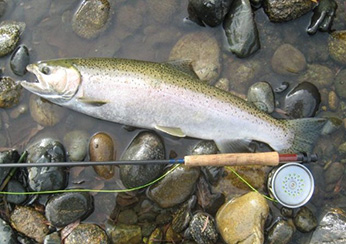
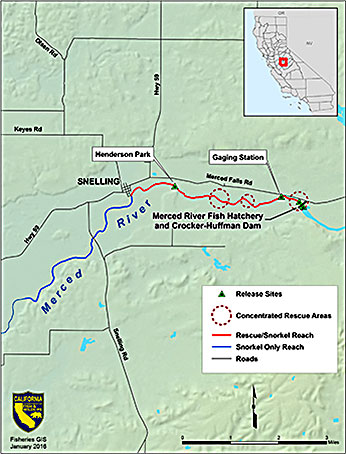 (click/tap to enlarge)
(click/tap to enlarge)
CDFW was prepared to hold adult rainbow trout (O. mykiss) captured during the 2014 rescue operation in the Merced Fish Hatchery until water conditions in the river improved when typical winter rains began. Captive fish were tagged with Passive Integrated Transponders (PIT) as part of the release monitoring plan. Unfortunately, extreme drought conditions continued throughout the winter of 2014/2015 and forecasts predicted another dry year. A decision was made hold the fish, thus avoiding the need for another rescue later in the year. Examination showed that about half the fish were sexually mature. Hatchery staff successfully spawned 12 pairs which produced approximately 750 juveniles. Eighty percent of the juveniles and 60% of the adults survived the time in captivity.
The winter of 2015/2016 rain events improved river conditions with cooler temperatures and sufficient flows. In mid-January 2016, CDFW released 606 one year old juveniles (Figure 1) and 35 adult rainbow trout (Figure 2)into four predetermined sites— two at the upper and lower ends of the Merced River Hatchery, Henderson Park and near the gaging station (see map). In order to identify released fish in the event of future rescues, T-bar anchor Floy™ tags were inserted near the dorsal fins.
CDFW continues discussions with Merced Irrigation District, NOAA Fisheries and the U.S. Fish and Wildlife Service through the Federal Agency Regulatory Commission (FERC) process to address adequate flow and temperature improvements for native trout and salmon.
If an angler encounters a Floy™ fish, please record the number on the tag and contact Fisheries Branch at jonathan.nelson@wildlife.ca.gov.
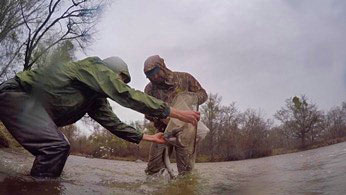 Figure 1: One year old juveniles. - Photo Andrew Hughan.
Figure 1: One year old juveniles. - Photo Andrew Hughan.
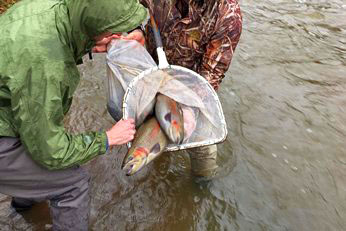 Figure 2: 2014 rescued adults - Photo Andrew Hughan.
Figure 2: 2014 rescued adults - Photo Andrew Hughan.
Species Status
National Marine Fisheries Service (NMFS) originally proposed to list Central Valley steelhead (anadromous rainbow trout) Oncorhynchus mykiss (O.) mykiss as endangered in 1996. At that time, it was concluded that the Central Valley steelhead distinct population segment (DPS) was in danger of extinction due to widespread habitat degradation, combined with the destruction and blockage of habitat within the Central Valley rivers and streams. However, in March, 1998, NMFS concluded that, the risks to Central Valley steelhead had been reduced, due to the implementation of state conservation efforts to enhance population monitoring and actions to address artificial propagation of the species, and listed the Central Valley steelhead as a threatened species (NMFS 2014).
Changes to Reservoir Operations due to Drought
In early 2014 the Merced Irrigation District advised CDFW that they would seek to implement drought related reservoir operations and also changes in water delivery operations. The proposed plan included the use of an existing fish ladder to allow resident and anadromous steelhead/rainbow trout with passage upstream of Crocker-Huffman Dam and so allow fish to have access to upstream cold water refugia.
However, due to disease and aquatic invasive species transmission concerns, CDFW recommended that the fish ladder at the dam not be opened. Instead, it was proposed that that if water temperature in the Merced River downstream of the dam becomes unsuitable for both resident and anadromous steelhead/rainbow trout and fall-run Chinook salmon O. tshawytscha, that fish be rescued following an emergency rescue plan and temporarily held in the Merced River Hatchery until temperatures in the lower Merced River downstream of the dam become suitable for fish survival.
Necessity of Rescue
In early July, 2014 CDFW became concerned that low levels of dissolved oxygen and high water temperatures in the upper reach of the Merced River below the Crocker-Huffman (Figure 3) dam and near the town of Snelling (Figure 4) threatened the health and survival of the adult steelhead/rainbow trout observed, and fish rescue/relocation was therefore necessary.
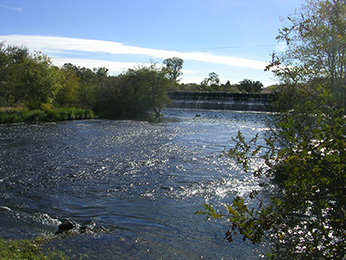 Figure 3 - Spawning riffle below the dam.
Figure 3 - Spawning riffle below the dam.
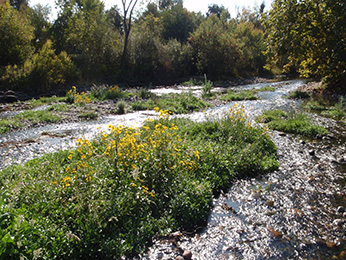 Figure 4 - Spawning riffle near Snelling.
Figure 4 - Spawning riffle near Snelling.
Rescue Methods
Initially, fish sampling efforts included beach-seines, combined with block nets and electrofishing, but these methods proved to be ineffective, while hook and line produced the best results. As a result, all other fish capture methods were discontinued. A total of 62 adult steelhead/rainbow trout was transported to the Merced River Hatchery cold water holding facility. Of this total, 10 mortalities occurred, due to stresses and injuries associated with handling and transport. Six additional steelhead/rainbow trout were later retrieved from inside the hatchery trap, bringing the total captive fish to 58. No Chinook salmon were rescued and brought into captivity.
Data
Merced River Steelhead / Rainbow Trout Data
| Species
|
Rescued / Collected
|
Number Released
|
Number Retained
|
Number of Mortalities
|
Number Held
|
| steelhead/rainbow trout
|
62
|
0
|
62
|
10
|
52
|
| steelhead/rainbow trout
|
6
|
0
|
6
|
0
|
6
|
Hatchery Relocation Facility
In July 2014, chill boxes, bio-filtration and UV-treated circulation tanks were purchased and installed at Merced River hatchery to accommodate rescued fish (Figure 5). Upon arrival at the hatchery, fish were chemically treated for potential parasitic and bacterial diseases. Fish were successfully reared in the isolated tanks with no additional mortalities into January, 2015.
Monitoring using Passive Integrated Transponders (PIT)
To help evaluate the rescue effort, each captive steelhead/rainbow trout was inserted with an individually coded PIT tag (Figure 6). This will allow biologists to monitor fish movements and gain important information regarding fish residence in the river. The tagging operation occurred in December, 2014, in anticipation of a winter release back to the river.
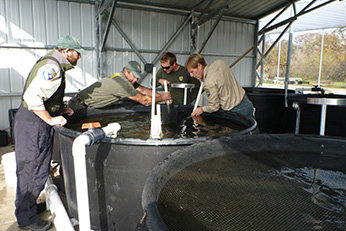 Figure 5
Figure 5
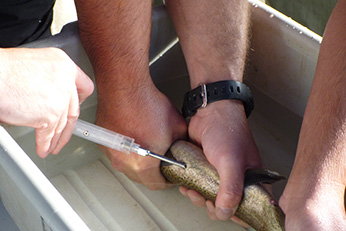 Figure 6
Figure 6
Project Permitting
Interagency Fish Rescue Policy (CDFW/NMFS/USFWS). Fish rescue by CDFW is exempt under CEQA.
Resources
- Moyle, P.B. 2002. Inland Fishes of California, University of California Press.
- National Marine Fisheries Service. 2014. Recovery Plan for the Evolutionarily Significant Units of Sacramento River Winter-run Chinook Salmon and Central Valley Spring-run Chinook salmon and the Distinct Population Segment of California Central Valley Steelhead. California Central Valley Area Office. July 2014.